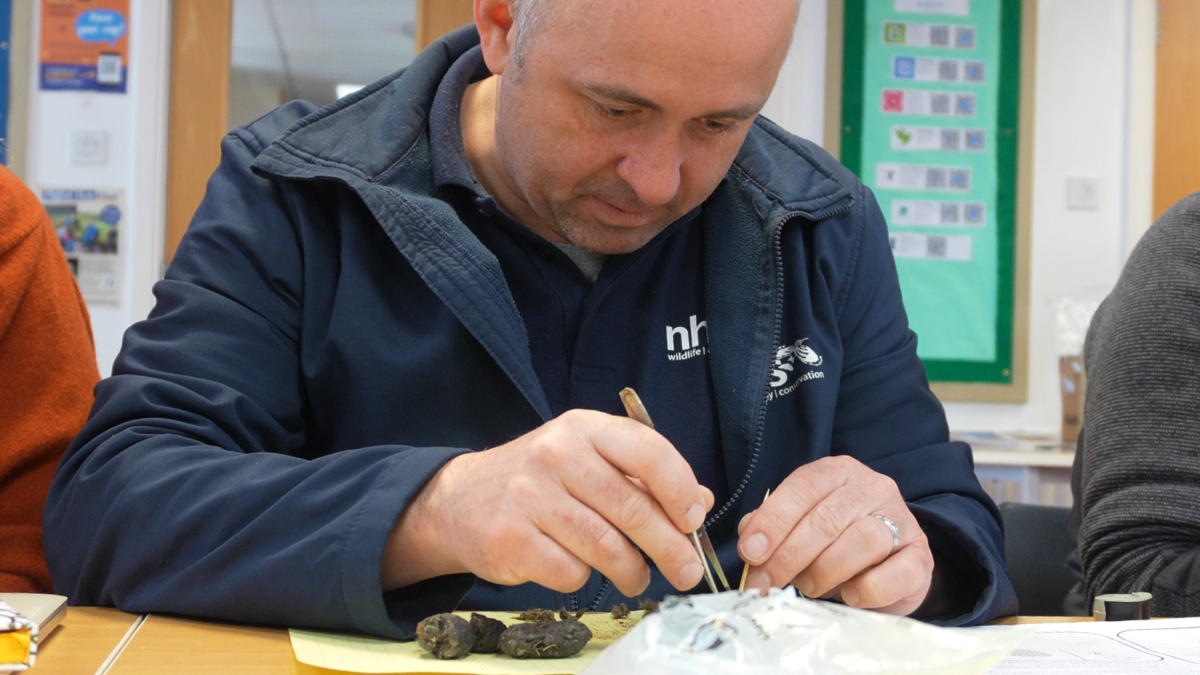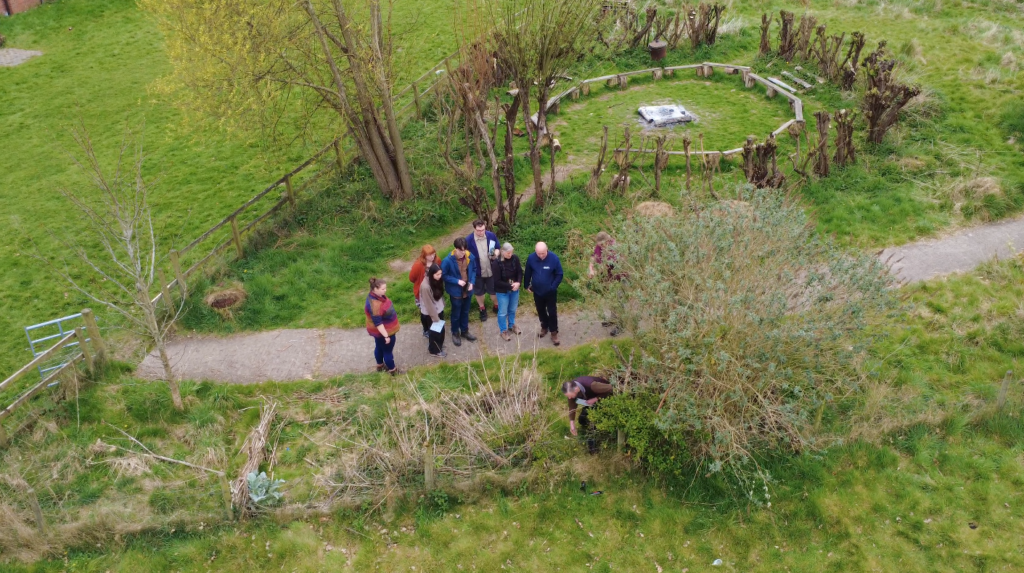
In the lead-up to this year’s National Mammal Week (21st-27th April), NHBS was kindly invited by the Mammal Society a preview of their new Mammal Identification and Ecology residential training course.
The Mammal Society is an active charity and learned society dedicated to the study and conservation of all British mammals. Founded in 1954, the organisation plays a crucial role in promoting research, education, and advocacy for mammal conservation. The Mammal Society works closely with scientists, policymakers, and the public to gather data, inform policy, and raise awareness about the importance of preserving Britain’s mammals species. The society’s efforts are vital in addressing the challenges faced by mammals, including habitat loss, climate change, and human activities.
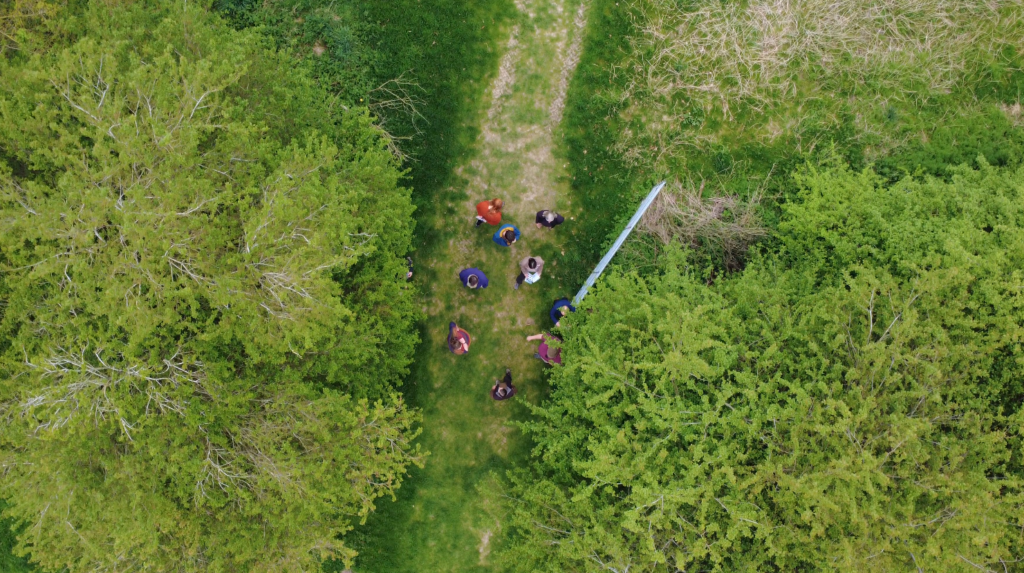
A golden ticket
I was fortunate enough to receive the golden ticket to this enriching experience – a preview of a new immersive, hands-on training course focused on British mammals. Heading to Field Studies Council (FSC) Preston Montford activity centre, I was looking forward to engaging with ecologists, conservationists, and enthusiasts, all united by their passion for conserving UK mammal populations. I was also excited to gain insights into the equipment and methods used for monitoring mammals and to enhance my own identification skills.
The training course aimed to introduce participants to the skills needed for mammal identification and help us familiarise ourselves with various monitoring methods. These skills are crucial for accurately tracking population trends, population movements, and the factors influencing changes in conservation status. With one in four mammal species threatened with extinction in Britain, gathering detailed data is more important than ever.
The FSC’s centre, surrounded by fields, woodland, ponds, and the nearby River Wye, provided an ideal backdrop for a mix of fieldwork and classroom-based learning. With the added presence of an evening bar, this was a most appropriate venue where course participants could exchange their thoughts and evaluations.
Diving into mammal identification
The course kicked off on Friday evening with a hands-on session preparing Longworth Small Mammal Traps. We strategically placed 40 traps in an area of mixed habitat (the more traps you put out the better the chances of success). We added hay to each trap and baited them with seeds and blowfly pupae to attract rodents and shrews. The next morning, our efforts were rewarded with the capture of a Wood Mouse and a Common Shrew. It was fascinating to learn about the shrew’s high metabolic rate and the importance of providing food in the traps.
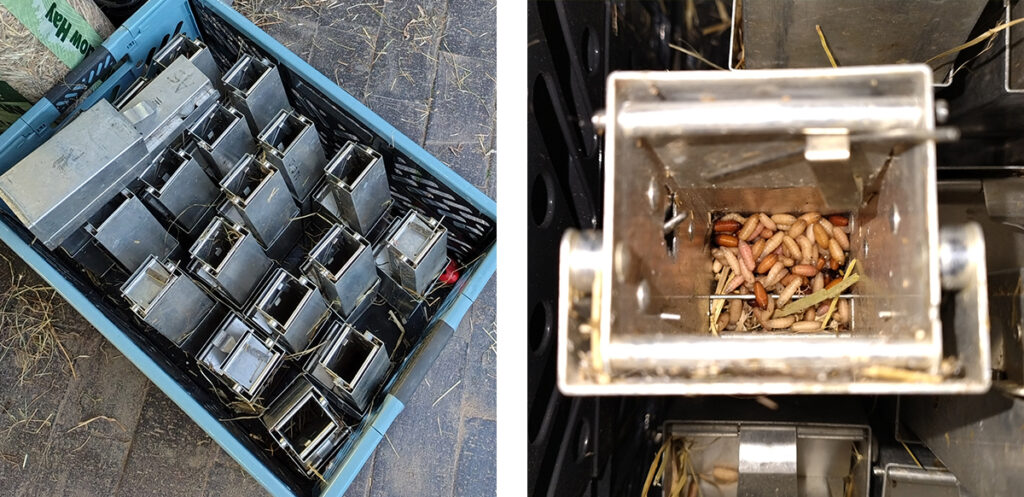
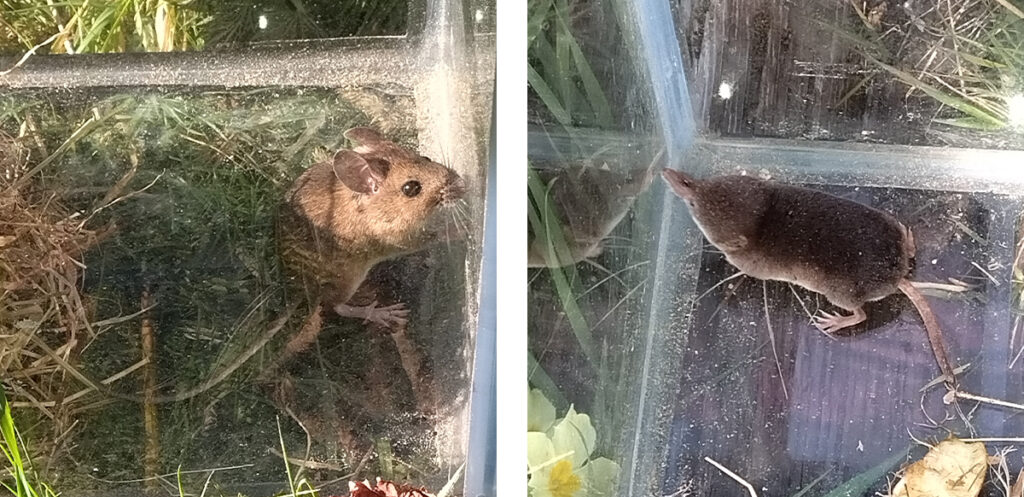
Additional monitoring methods included audio recording equipment, a Mammal Footprint Tunnel, and an improvised close-focus camera trap. The overnight footage from the camera revealed some curious Rabbits, adding to the excitement of our findings.
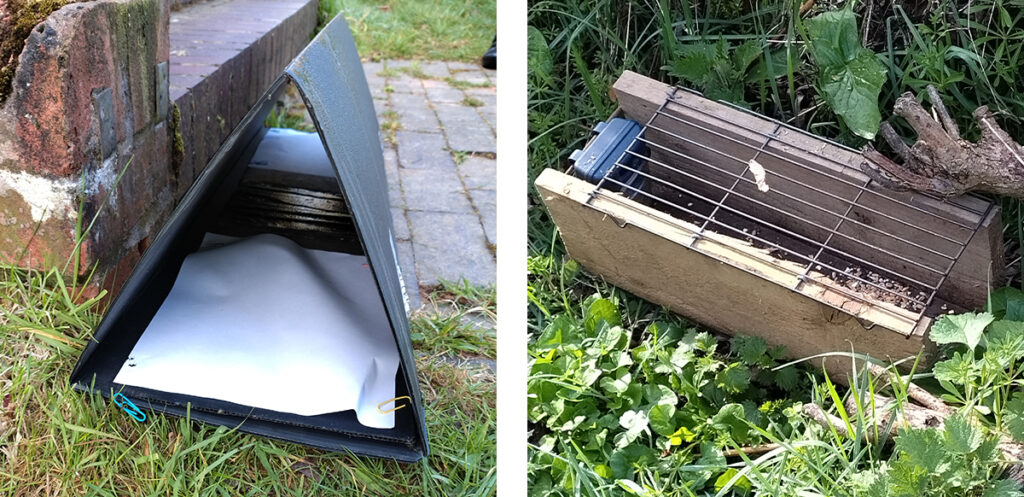
Classroom insights and field adventures
Saturday was packed with classroom sessions in a room that had been kitted out with mammal skins, skulls, nests, owl pellets, droppings and publications. The morning session was devoted to gaining a deeper understanding of small mammals and their ecological roles. The afternoon session focused on herbivores, teaching us how to identify the six species of deer in the UK and recognise signs of Wild Boar presence, such as uprooted turf.
A highlight of the day was the field session, where we searched for signs of mammal activity. From tunnels through grass and soil to footprints, droppings and gnawed hazelnuts, the landscape was teeming with evidence of our furry neighbours. The evening session on carnivores was equally engaging, with discussions on the UK’s mustelids, the elusive Wildcat, and the controversies surrounding mammal persecution and reintroduction.
The evening concluded with a session on bats, followed by a thrilling field trip with bat detectors and thermal imaging monoculars.
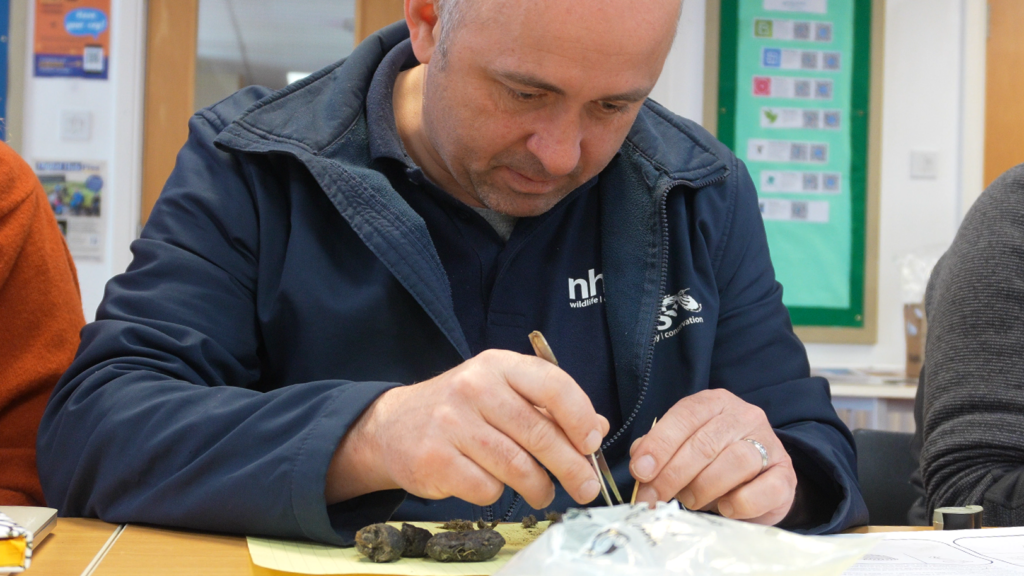
Sunday morning saw us checking the results from our field monitoring equipment. The most challenging part for me was the classroom session on tracks and signs, where I struggled with a footprint quiz. Dissecting owl pellets was a unique experience, revealing the remains a Field Vole and a Common Shrew in the pellet I looked at.
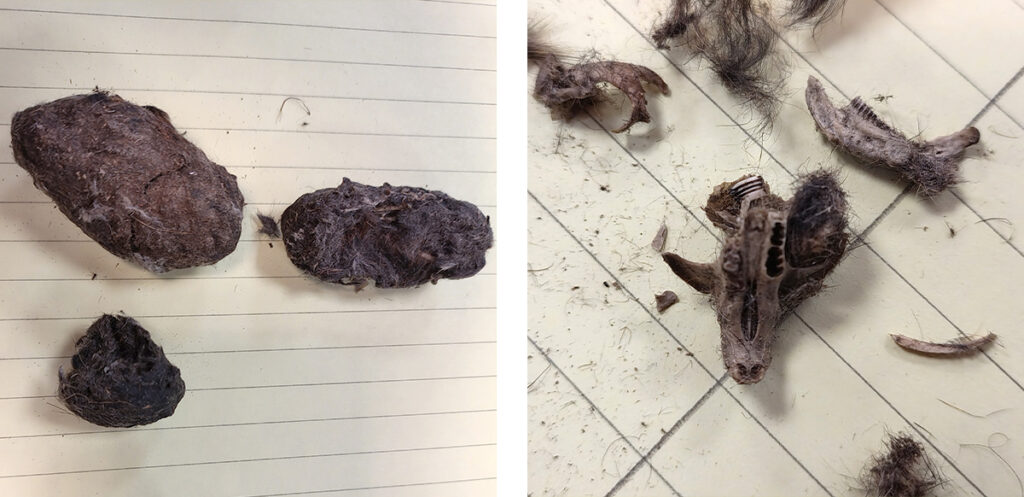
The final session covered sea mammals, such as dolphins, whales and seals after which a weekend of comprehensive learning was rounded off with a course evaluation.
Post-event musings
The Mammal Society’s training course was an invaluable experience, combining hands-on fieldwork with insightful classroom sessions. I returned with a deeper understanding of the diversity and complexity of the UK’s mammals, as well as the importance of ongoing conservation efforts. Equally, I gained a refreshed appreciation for the profound knowledge and dedication of the members of the Mammal Society. I also learned about some handy wildlife recording apps, such as the Mammal Society’s own Mammal Mapper, and iRecord for all biological recording. Whether you’re a seasoned ecologist or a curious enthusiast, you’re sure to return from this training enlightened and motivated.
Mammal Society events
The next Mammal Identification and Ecology weekend is scheduled for September – you can find more information here: Mammal Identification and Ecology – Residential Training Course (2 Nights)
The Mammal Society has numerous other useful events throughout the year – Please check out their handy overview at: Upcoming events
Recommended equipment for mammal identification:
Recommended reading:
Britain’s Mammals: A Field Guide to the Mammals of Great Britain and Ireland
How to Find and Identify Mammals (Revised Edition)

